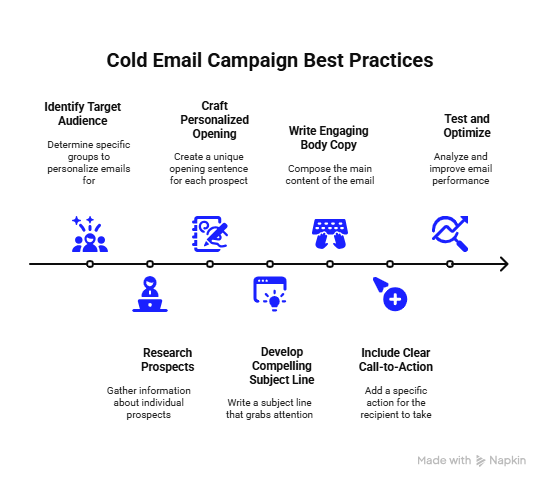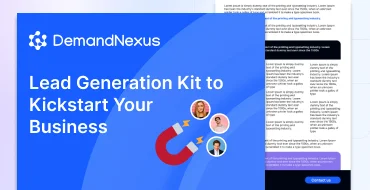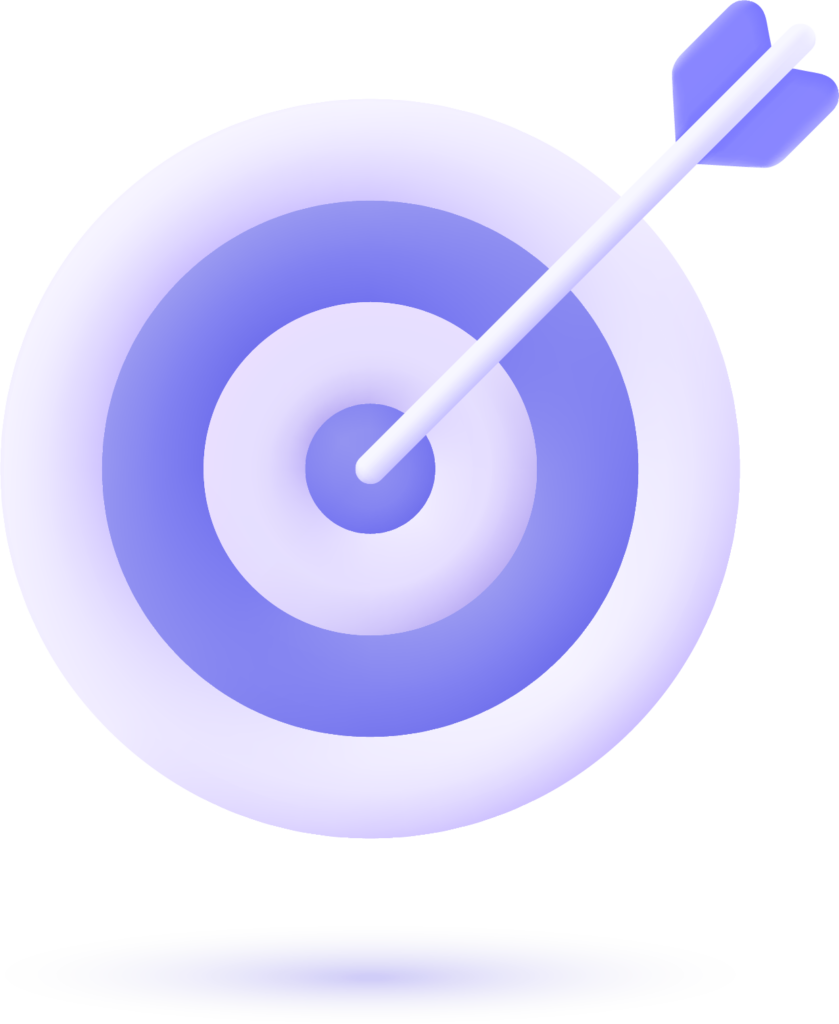Why Use Cold Email Templates?
Cold email templates provide a structured starting point, allowing you to maintain consistency while tailoring messages to your audience. They’re ideal for repeatable outreach tasks, such as initial introductions, follow-ups, or meeting requests. However, templates work best when paired with personalization, research, and a clear call-to-action (CTA). By leveraging data-driven insights and automation, you can scale your efforts without sacrificing relevance.
At DemandNexus, we empower businesses with tools to create and automate personalized cold email campaigns, ensuring your messages resonate with prospects and drive higher response rates.
Key Components of an Effective Cold Email Template
Before diving into the templates, let’s break down the essential elements of a high-performing cold email:
- Compelling Subject Line: Short, personalized, and intriguing subject lines (e.g., “Quick Question About [Company Name]”) boost open rates.
- Immediate Value: Highlight the prospect’s pain points and how your solution helps within the first sentence.
- Single, Clear CTA: Ask for one specific action, like scheduling a call or replying with feedback.
- Follow-Up Plan: Plan a sequence of 3–5 touchpoints to nurture prospects over time.
Learn more about crafting impactful emails in our guide on what is cold emailing.
10 Proven Cold Email Templates for Different Scenarios
Below are 10 effective cold email templates tailored for various outreach goals. Each is designed to be concise, relevant, and adaptable to your brand’s voice.
1. The Research Cold Email Template
When to Use: Ideal for prospects when you’ve researched their company or role to show genuine interest.
Subject: Ideas to Boost [Company Name]’s [Specific Goal] Hi [First Name], I noticed [Company Name] recently [specific achievement, e.g., launched a new product]. Impressive work! At [Your Company], we help businesses like yours [specific benefit, e.g., streamline marketing efforts]. Would you be open to a 10-minute call next week to discuss how we can support [specific goal]? Best, [Your Name] [Your Title], [Your Company] [Calendar Link]
Why It Works: Referencing a recent event or achievement builds trust and shows you’ve done your homework.
2. Follow-Up Cold Email Template
When to Use: Use this cold email follow-up template 2–3 days after the initial email to re-engage prospects.
Subject: Following Up on [Previous Email Topic] Hi [First Name], I reached out last week about [specific topic, e.g., improving your sales funnel]. I know you’re busy, so I wanted to share a quick resource: [link to relevant case study or article]. Could we schedule a brief chat to explore this further? Here’s my calendar: [Calendar Link]. Cheers, [Your Name]
Why It Works: It’s polite, provides value, and reinforces your initial message without being pushy. Check out our B2B sales cadence guide for more follow-up strategies.
3. Cold Email Template for Meeting
When to Use: Perfect for requesting a discovery call or demo with decision-makers.
Subject: 15 Minutes to Explore [Benefit] for [Company Name] Hi [First Name], At [Your Company], we’ve helped [similar company] achieve [specific result, e.g., 20% more leads]. I believe we can do the same for [Company Name] by addressing [pain point]. Are you available for a 15-minute call on [specific date/time] to discuss this? [Calendar Link] Best regards, [Your Name]
Why It Works: It’s direct, highlights a measurable benefit, and makes scheduling easy.
4. AIDA Cold Email Template
When to Use: Use the Attention-Interest-Desire-Action framework for prospects matching your ideal customer profile.
Subject: Tired of [Pain Point]? Hi [First Name], Struggling with [pain point, e.g., inefficient workflows]? Our platform at [Your Company] has helped [similar companies] save [specific metric, e.g., 10 hours weekly]. Here’s how: - [Benefit 1] - [Benefit 2] - [Benefit 3] Let’s chat for 10 minutes to see how we can help [Company Name]. [Calendar Link] Cheers, [Your Name]
Why It Works: It grabs attention, builds desire with benefits, and prompts action clearly.
5. Competitor Mention Cold Email Template
When to Use: Target prospects using a competitor’s product to highlight your unique value.
Subject: How [Company Name] Can Outperform [Competitor] Hi [First Name], I noticed [Company Name] uses [Competitor Product]. Our solution at [Your Company] offers [key differentiator, e.g., faster integration], helping [similar company] achieve [result]. Could we discuss how we can enhance [specific process] for you? [Calendar Link] Best, [Your Name]
Why It Works: It leverages competitor familiarity to position your solution as a better alternative.
6. Recent Event Cold Email Template
When to Use: Congratulate prospects on a recent achievement to start a conversation.
Subject: Congrats on [Event/Achievement]! Hi [First Name], I saw [Company Name] just [event, e.g., won an award]. Amazing! At [Your Company], we help companies like yours [specific benefit, e.g., scale operations]. Would you have 10 minutes next week to explore this? [Calendar Link] Congrats again, [Your Name]
Why It Works: Genuine praise builds rapport and ties your solution to their success.
7. Cold Email Sequence Template (Initial Email)
When to Use: The first email in a cold email sequence template to introduce your solution.
Subject: [Company Name] + [Your Company]: A Perfect Match? Hi [First Name], I’m with [Your Company], and we specialize in [specific benefit, e.g., boosting sales efficiency]. Companies like [similar company] have seen [result, e.g., 15% growth] with our platform. Can we schedule a quick call to discuss how we can help [Company Name]? [Calendar Link] Best, [Your Name]
Why It Works: It’s concise, value-focused, and sets the stage for follow-ups.
8. Problem-Agitate-Solve (PAS) Cold Email Template
When to Use: Highlight a prospect’s pain point and position your solution as the answer.
Subject: Struggling with [Pain Point]? Hi [First Name], Many [industry] leaders face [pain point, e.g., high churn rates]. This can lead to [negative outcome, e.g., lost revenue]. At [Your Company], we’ve helped [similar company] solve this with [solution]. Let’s discuss how we can help [Company Name]. Are you free on [date/time]? [Calendar Link] Regards, [Your Name]
Why It Works: It empathizes with the prospect’s challenge and offers a clear solution.
9. Resource-Sharing Cold Email Template
When to Use: Share valuable content to build trust without a hard sell.
Subject: Thought You’d Find This Helpful Hi [First Name], Your recent post on [topic] caught my eye. I thought you’d enjoy this [resource, e.g., article on [topic]] that dives deeper: [Link]. At [Your Company], we help [industry] professionals like you [benefit]. Would you be open to a quick chat about this? [Calendar Link] Best, [Your Name]
Why It Works: It provides value upfront, fostering goodwill and encouraging engagement.
10. Best Time to Send Cold Email Template
When to Use: Combine timing insights with a pitch to maximize open rates.
Subject: A Quick Idea for [Company Name] Hi [First Name], Did you know early mornings (4–8 AM) are the best time to send cold emails? At [Your Company], we help [industry] teams like yours [benefit, e.g., boost response rates]. Can we hop on a 10-minute call to share how we can optimize your outreach? [Calendar Link] Cheers, [Your Name]
Why It Works: It ties into timing strategies, piquing interest with actionable insights.
How to Personalize Cold Email Templates
Personalization is the key to avoiding generic, spammy emails. Here’s how to make your cold email templates feel tailored:
- Research Prospects: Use LinkedIn or company websites to find details like recent achievements, roles, or pain points.
- Use Dynamic Fields: Insert names, company names, or industry-specific terms automatically with tools like DemandNexus’s cold email platform.
- Segment Your Audience: Group prospects by industry, role, or needs to craft relevant messages.

DemandNexus helps you automate personalization at scale, ensuring every email feels custom-crafted while saving you time.
Best Practices for Using Cold Email Templates
To maximize the impact of your cold email templates, follow these best practices:
- Warm Up Your Email Domain: Gradually increase sending volume to build sender reputation. Learn how in our guide on warming up a cold email list.
- A/B Test Elements: Experiment with subject lines, CTAs, and send times to optimize performance.
- Use a Multi-Channel Approach: Combine emails with LinkedIn outreach or calls for better results. Explore sales prospecting techniques.
- Track Metrics: Monitor open rates, reply rates, and conversions to refine your strategy.
Building a Cold Email Sequence Template
A cold email sequence template ensures consistent follow-ups to nurture prospects. Here’s a sample 5-email cadence:
- Day 1: Initial email (e.g., Template 7).
- Day 3: Follow-up with a resource (e.g., Template 2).
- Day 7: Second follow-up addressing a pain point (e.g., Template 8).
- Day 14: Offer a meeting (e.g., Template 3).
- Day 21: Final attempt with a soft close (e.g., “Is this a priority for [Company Name]?”).
Tip: Space emails strategically and pause the sequence if a prospect responds. Discover more in our B2B sales cadence guide.
Conclusion: Elevate Your Outreach with Cold Email Templates
Cold email templates are powerful tools to streamline your outreach, but their success hinges on personalization, research, and strategic timing. By using the templates above, testing variations, and leveraging automation, you can connect with prospects effectively and drive meaningful conversations. Whether you’re sending an initial pitch, following up, or requesting a meeting, these templates provide a solid foundation for success.
Ready to supercharge your cold email campaigns? With DemandNexus, you can automate personalized outreach, track performance, and optimize your strategy to generate more leads and close deals faster.



